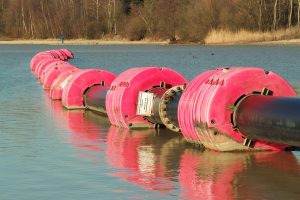Efficient water management is a critical component of landscape design and sustainability. With the increasing urbanisation and the need to protect properties from water damage, innovative drainage solutions are the need of the hour. Among the range of options available for landscapers and homeowners, strip drain systems have emerged as a simple yet effective means of managing water flow within various outdoor spaces.
The Basics of Strip Drain Systems
Strip drains, also known as linear drains, consist of a narrow and long trench covered by a grating. These drains are designed to collect and redirect water away from landscapes quickly and efficiently. Unlike traditional point drains that remove water from small, concentrated areas, strip drains have the advantage of covering larger stretches of land, which enables them to capture water over an extended area.
The adaptability of strip drain systems allows them to be seamlessly incorporated into various landscape designs without disrupting the aesthetic appeal. They are often installed in gardens, patios, driveways, poolsides, and other hardscape areas where surface water accumulation is probable.
Benefits of Implementing Strip Drains
One of the most significant benefits of using a strip drain system is its capability to prevent the accumulation of water, thereby mitigating potential damage that can be caused by standing water such as soil erosion, plant disease, and structural damage to property. They are particularly useful in areas that experience heavy rainfall or in landscapes that have impervious surfaces which do not allow for quick natural absorption of water.
Additionally, strip drain systems are low-maintenance, as their design prevents the build-up of debris that can clog point drains. This makes them a preferred option for those seeking long-term and cost-effective water management solutions for their landscapes.
Strip drains also play a crucial role in water conservation. By channelling the water into storage tanks or rain gardens, they allow the collected rainwater to be repurposed for irrigation or groundwater recharge, promoting an eco-friendly, water-wise landscape practice.
Choosing the Right Strip Drain for Your Landscape
When selecting a strip drain, it is essential to consider various factors such as the size of the area to be drained, the volume of water expected, and the load-bearing capacity required if vehicles will pass over the drain. The strips come in a variety of materials such as plastic, metal, and concrete, and are available in different design options to suit aesthetic preferences.
It is also vital to ensure that installation is carried out correctly, with an adequate slope to facilitate water flow, and that the drain connects to an appropriate discharge point, such as a stormwater system or absorption area.
The Role of Strip Drainage in Eco-friendly Landscaping
As environmental concerns take centre stage in the planning and development of living spaces, strip drains serve as an essential aspect of sustainable landscaping. They support the principles of Low Impact Development (LID), which aims to manage stormwater at the source with minimal disruption to the environment.
Employing a strip drain system aligns with the ethos of creating landscapes that work in harmony with nature, rather than imposing on it. The effective drainage of excess water protects the natural soil composition, ensures the health of plant life, and prevents pollutants carried by stormwater from contaminating local water bodies.
Installation and Maintenance
The effectiveness of a strip drain system is greatly dependent on its proper installation and ongoing maintenance. It is often advisable to engage with professionals who can perform an assessment of the landscape, determine the optimal placement of the drains, and ensure that the installation is performed in compliance with local regulations and best practices.
Maintenance often involves regular checks to ensure the grates are free of debris that may obstruct water flow and conducting periodic inspections to ascertain that the system remains structurally sound and functional.
Conclusion
Implementing a strip drain offers an efficient solution to managing water in landscapes. With their low-profile design, capacity to handle large volumes of water, and easy integration into various environments, they represent a valuable addition to any landscape requiring robust water management.
As awareness around the importance of effective drainage increases, strip drains are becoming increasingly popular. They deliver a practical and sustainable approach that addresses the challenges of water management, while supporting the integrity and beauty of the natural outdoor spaces they protect.
Whether in residential, commercial, or public landscapes, strip drain systems demonstrate their utility and effectiveness. By proactively incorporating such solutions, property owners and landscapers are taking important steps toward resilient, environmentally-conscious, and well-maintained outdoor areas.
In conclusion, the benefits of strip drain systems in landscape design cannot be overstated. They offer a functional, durable, and eco-friendly solution for the complex challenge of water management. For those seeking to protect and enhance their outdoor environment, investing in a quality strip drain system can lead to significant long-term advantages for both the property and the wider ecosystem.


